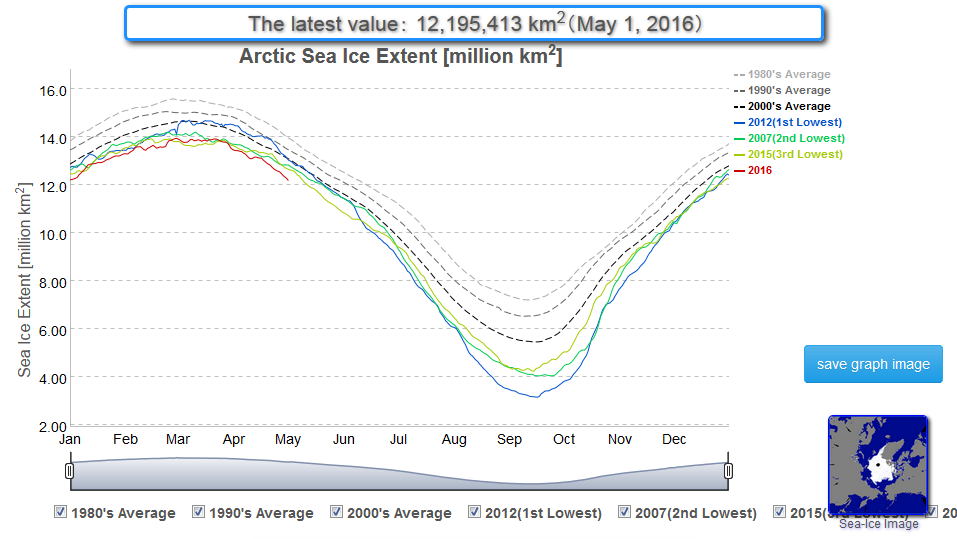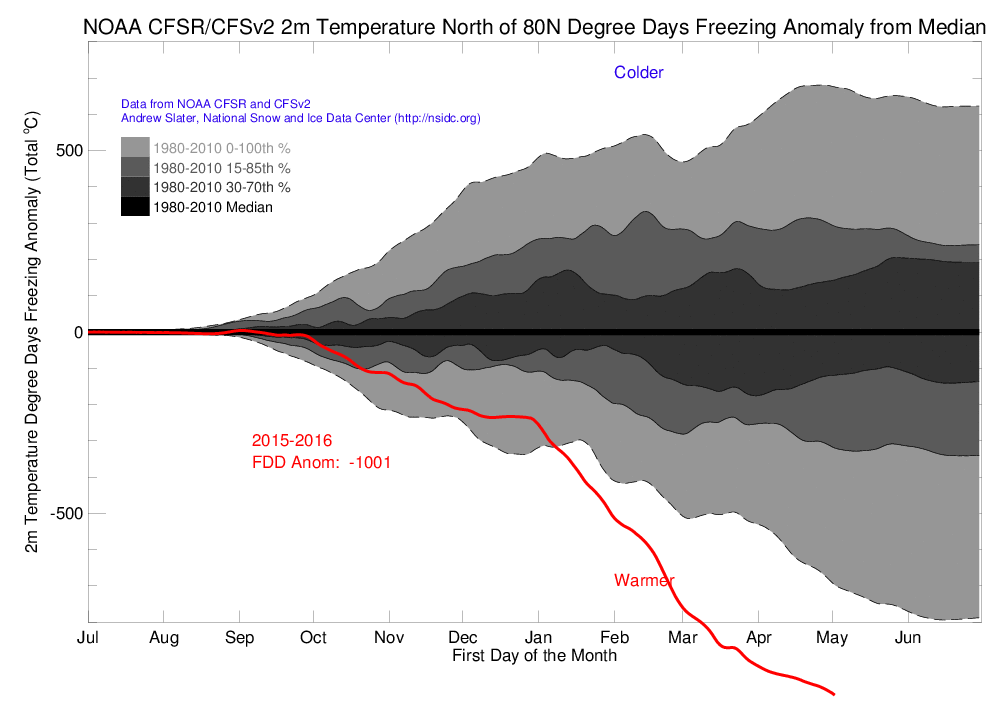Environment & Energy
Related: About this forumSince 4/27, Arctic Sea Ice Loss 75,000 km2/day - We Have Never Seen This Rate Of Loss This Early
Near zero sea ice by the end of melt season. The dreaded Blue Ocean Event. Something that appears more and more likely to happen during 2016 with each passing day. These are the kinds of climate-wrecking phase changes in the Arctic people have been worrying about since sea ice extent, area, and volume achieved gut-wrenching plunges during 2007 and 2012. Plunges that were far faster than sea ice melt rates predicted by model runs and by the then scientific consensus on how the Arctic Ocean ice would respond to human-forced warming this Century. For back during the first decade of the the 21st Century the mainstream scientific view was that Arctic sea ice would be about in the range that it is today by around 2070 or 2080. And that we wouldn’t be contemplating the possibility of zero or near zero sea ice until the end of this Century.
But the amazing ability of an unconscionable fossil fuel emission to rapidly transform our world for the worst appears now to outweigh that cautious science. For during 2016, the Arctic is experiencing a record warm year like never before. Average temperatures over the region have been hitting unprecedented ranges. Temperatures that — when one who understands the sensitive nature of the Arctic looks at them — inspires feelings of dislocation and disbelief. For our Arctic sea ice coverage has been consistently in record low ranges throughout Winter, it has been following a steepening curve of loss since April, and it now appears to have started to fall off a cliff. Severe losses that are likely to both impact the Jet Stream and extreme weather formation in the Northern Hemisphere throughout the Spring and Summer of 2016.
Melting more than Two Weeks Faster than the Early 2000s
Since April 27th, according to a record of sea ice extent provided by JAXA, daily rates of sea ice loss have been in the range of 75,000 square kilometers for every 24 hour period. That’s 300,000 square kilometers of sea ice, or an area the size of New Mexico, lost in just four days. Only during 2015 have we ever seen such similarly rapid rates of loss for this time of year.
 ?w=600&h=338
?w=600&h=338
EDIT
Arctic Heat Like We’ve Never Seen Before
Further to the north, high pressure is expected to continue to dominate over the next seven days. This will generate further compaction of the already weak ice even as it allows more and more sunlight to fall over that greatly thinned white veil.
 ?w=600&h=429
?w=600&h=429
https://robertscribbler.com/2016/05/02/arctic-sea-ice-is-falling-off-a-cliff-and-it-may-not-survive-the-summer/
GliderGuider
(21,088 posts)"They that sow the wind, shall reap the whirlwind."
truebrit71
(20,805 posts)postulater
(5,075 posts)I think I am adding another one.